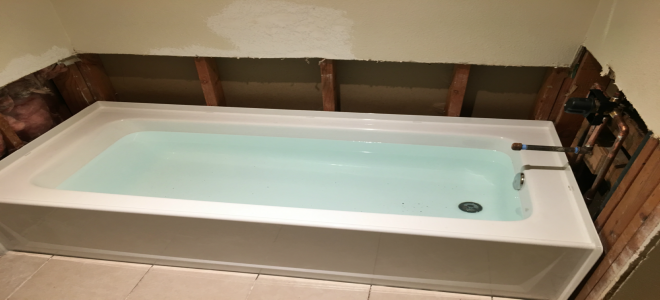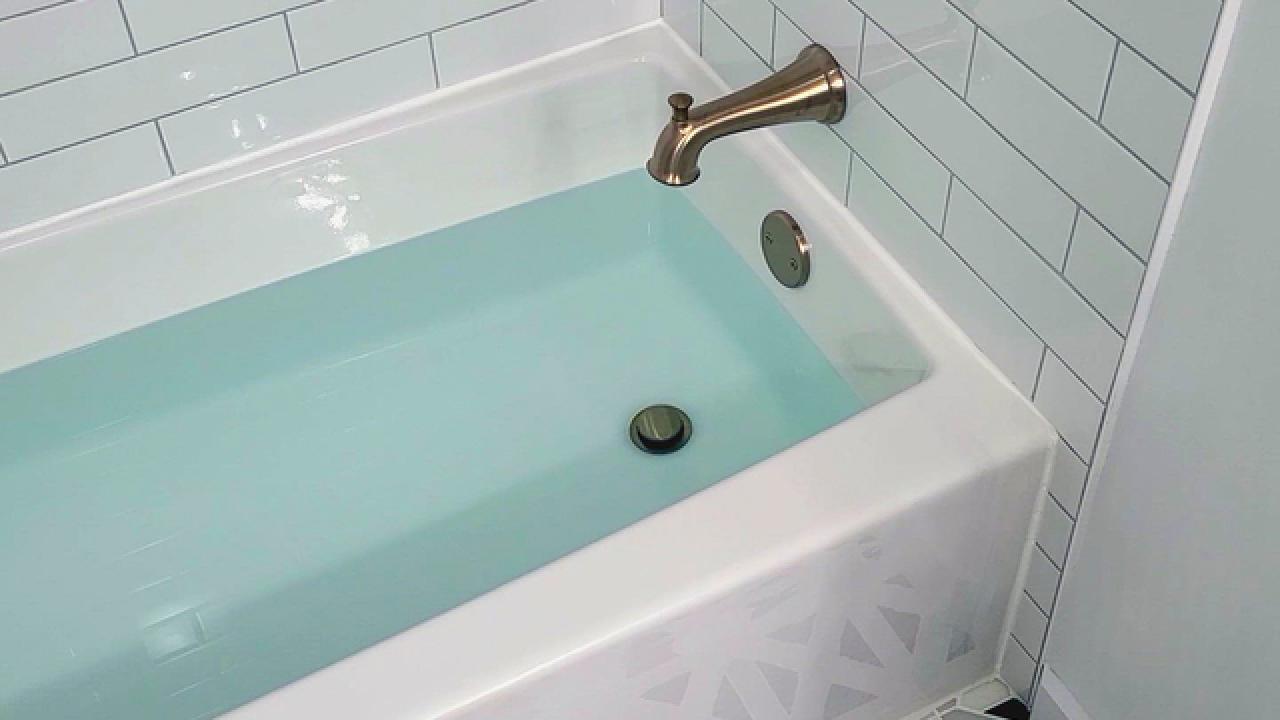How to Remove and also Change a Bathtub.
How to Remove and also Change a Bathtub.
Blog Article
The article author is making a few good annotation on How to Install a Bathtub Yourself in general in this great article down the page.

Installing a bath tub isn't precisely rocket science, but it does call for solid plumbing, woodworking, as well as in some cases, tiling abilities. Changing an old bathtub with a brand-new one is additionally a reasonably hard task. If the old bathtub is conveniently available, the job can move quickly; if you need to open up a wall surface to eliminate the old bathtub as well as position the new bathtub, the job is a lot harder. In either situation, the job is within a house handyman's skills, although you will require an assistant to leave the old tub and set in the brand-new one. Make certain you have actually qualified yourself for the work and also are comfortable trying it. As opposed to working with a professional to take control of a halfway-completed job, it is far better to think about using one before you start. Chances are you might need an expert plumber to make tube links.
This post will help you mount a new bathtub in your washroom if you have actually already bought a brand-new tub and do not need to transform the plan of your previous water supply pipelines.
Your tools and also material checklist must make up the following:
Getting ready for the Installation
First of all, the supporting structure supplied with the bathroom ought to be fitted (if needed) according to the producer's guidelines. Next, fit the taps or mixer to the bath tub. When fitting the faucet block, it is very important to ensure that if the faucet includes a plastic washing machine, it is fitted in between the bath and also the taps. On a plastic bath, it is additionally sensible to fit a sustaining plate under the faucets unit to stop stress on the bath tub.
Fit the versatile tap adapters to the bottom of the two faucets utilizing 2 nuts and olives (often supplied with the bathtub). Fit the plug-hole outlet by smearing mastic filler round the sink electrical outlet hole, and after that pass the outlet with the hole in the bathroom. Use the nut provided by the supplier to fit the plug-hole. Examine the plug-hole outlet for an inlet on the side for the overflow pipe.
Next, fit completion of the versatile overflow pipeline to the overflow electrical outlet. Afterwards, screw the pipeline to the overflow face which should be fitted inside the bath. Make sure you use all of the supplied washers.
Connect the trap to the bottom of the waste outlet on the bathtub by winding the thread of the waste outlet with silicone mastic or PTFE tape, as well as screw on the trap to the outlet. Link the bottom of the overflow tube in a similar manner.The bath ought to now be ready to be fitted in its final setting.
Removing Old Taps
If you need to replace old taps with new ones as a part of your installation, then the first thing you should do is disconnect the supply of water. After doing so, switch on the faucets to drain pipes any kind of water continuing to be in the system. The procedure of getting rid of the existing taps can be quite problematic because of the limited accessibility that is frequently the case.
Use a basin wrench (crowsfoot spanner) or a faucet device to reverse the nut that attaches the supply pipes to the taps. Have a cloth prepared for the remaining water that will originate from the pipes. When the supply pipelines have been eliminated, make use of the same device to loosen up the nut that holds the taps onto the bath/basin. You will certainly require to quit the single taps from transforming throughout this process. When the faucets have been eliminated, the holes in the bath/basin will certainly have to be cleaned of any type of old securing compound.
Before proceeding to fit the new faucets, contrast the pipeline links on the old taps to the new taps. If the old faucets are longer than the brand-new taps, then a shank adapter is required for the brand-new faucets to fit.
Setting up the Tub
Using the two wood boards under its feet, position the tub in the needed position. The wood boards are handy in equally spreading the weight of the bathtub over the location of the boards rather than focusing all the weight onto 4 little points.
The following goal is to ensure that the bath tub is leveled all round. This can be accomplished by examining the level and adjusting the feet on the bathtub until the spirit level reads degree.
To mount faucets, fit all-time low of the outermost flexible tap connector to the appropriate supply pipeline by making a compression sign up with; after that do the exact same for the various other tap.
Activate the water and also examine all joints and also brand-new pipework for leaks as well as tighten them if required. Fill the bathtub as well as additionally inspect the overflow electrical outlet as well as the normal outlet for leakages.
Ultimately, take care of the bath paneling as described in the manufacturer's user's manual. Tiling and also securing around the tub should wait until the bath tub has actually been utilized at least when as this will certainly settle it into its last placement.
Fitting New Taps
If the tails of the brand-new faucets are plastic, then you will require a plastic port to avoid damage to the string. One end of the port fits on the plastic tail of the tap and also the various other end provides a link to the existing supply pipes.
If you need to fit a monobloc, after that you will require lowering couplers, which links the 10mm pipe of the monobloc to the typical 15mm supply pipeline.
Next, place the faucet in the mounting opening in the bath/basin making sure that the washers remain in location in between the faucet and the sink. Safeguard the tap in place with the manufacturer given backnut. Once the faucet is firmly in place, the supply pipelines can be attached to the tails of the taps. The faucets can either be attached by using corrugated copper piping or with typical faucet connectors. The former kind should be connected to the faucet finishes first, tightening just by hand. The supply pipelines can later be linked to the various other end. Tighten up both ends with a spanner after both ends have been linked.
Tiling Around the Bath tub
In the location where the bathroom fulfills the tile, it is necessary to seal the joins with a silicone rubber caulking. This is very important as the installation can relocate sufficient to fracture a rigid seal, causing the water to penetrate the wall surface in between the bath as well as the tiling, causing difficulties with dampness and possible leaks to the ceiling listed below.
You can pick from a selection of coloured sealants to blend in your fixtures as well as installations. They are marketed in tubes and also cartridges, and also are capable of sealing gaps as much as a width of 3mm (1/8 inch). If you have a larger space to load, you can load it with spins of drenched paper or soft rope. Remember to always fill the bathtub with water before sealing, to allow for the motion experienced when the tub is in use. The sealant can split relatively very early if you do not take into consideration this activity prior to securing.
Conversely, ceramic coving or quadrant floor tiles can be made use of to border the bathroom or shower tray. Plastic strips of coving, which are easy to use and also reduce to dimension, are additionally conveniently readily available on the marketplace. It is a good idea to fit the floor tiles utilizing waterproof or water resistant sticky as well as grout.
Bathtub Installation
How Important Is A Bathtub To Your Home?
High-quality baths, showers, and other bathroom updates are necessary when considering a smart investment in your home. It’s a room that you go to every day and one that is constantly being used by guests.The bathroom is one of the top trafficked rooms in a home and also one of the most valuable in terms of home resale.
Install Piping Before Tub
You will be using your existing drain and waste vent system, but pipes required include the hot and cold water supply lines and a pipe leading to a shower head. A mixing valve and shower head are also needed. Air chambers may be required.
Position the Tub
Lower the tub into place so that the continuous flange fits against the wall studs and rests on 1’x4' or 2’x4' supports. Anchor the tub to the enclosure with nails or screws inserted through the flanges into the studs.
NOTE: Remember, bathtubs and shower stalls may require support framing. A bathtub filled with water is extremely heavy, so check building codes and framing support before installing the tub.
Assemble Drain Connections
Assemble the bathtub drain connections by connecting the tub overflow with the tub drain above the trap, not beyond it. The trap will have a compression fitting that screws over the arm of the overflow assembly.
Place a Pipe For the Shower Head
First, locate a brass female threaded winged fitting and attach it to a framing support via a screw or a nail. Then run a pipe up the wall for the shower head. Sweat or solder the other side of the brass fitting to the top of the pipe.
Attaching Hot and Cold Water Lines
Attach your water lines for both hot and cold by sweating these directly into the hot and cold ports of the mixing valve. The mixing valve will be how water enters the tub’s system, not by the pipes themselves.
Install the Spout
Extend a piece of 1/2 inch pipe, or whichever length is specified in the manufacturer’s instructions, for the tub spout. Sweat on a male threaded fitting at the end of the pipe or use a brass nipple of the proper length and a 1/2 inch cap.
NOTE: At this point you should have your rough-in plumbing work inspected before proceeding further.
Check For Leaks
Restore the water pressure and check the drain connection and the supply pipes for any sign of leaking.
estore the Bathroom Wall
Replace the wall with moisture-resistant drywall as a base for your wall covering. Seal the joints between the wall and your new tub with silicone caulk as protection against water seepage.
https://www.berkeys.com/2016/12/02/bathtub-installation-dallas/

We had been made aware of that report about How to Install a Bathtub Yourself from an acquaintance on our other web page. Please take a moment to share this article if you liked it. Thanks for taking the time to read it.
Customer Reviews Report this page